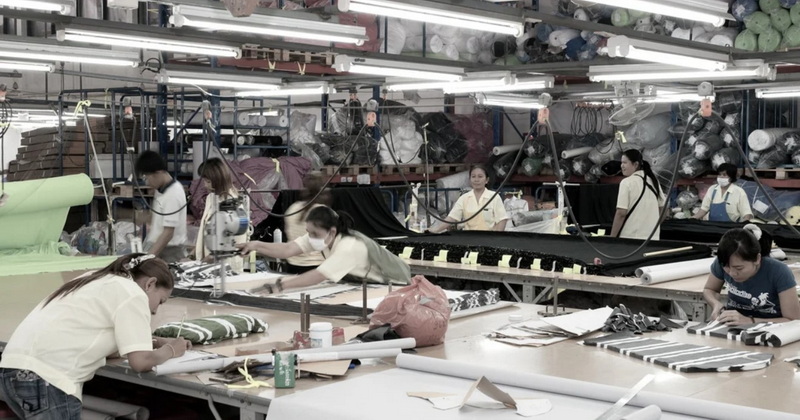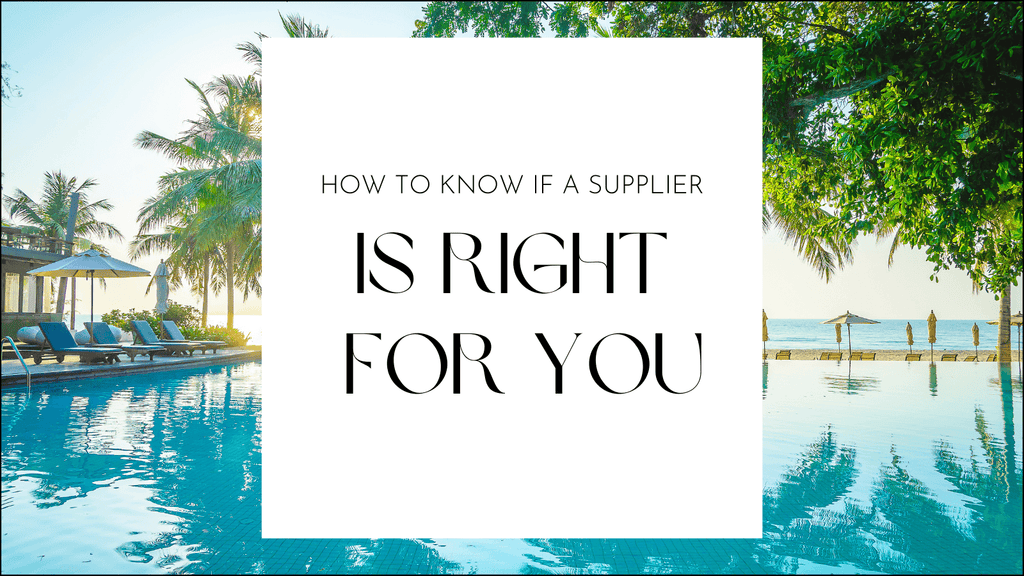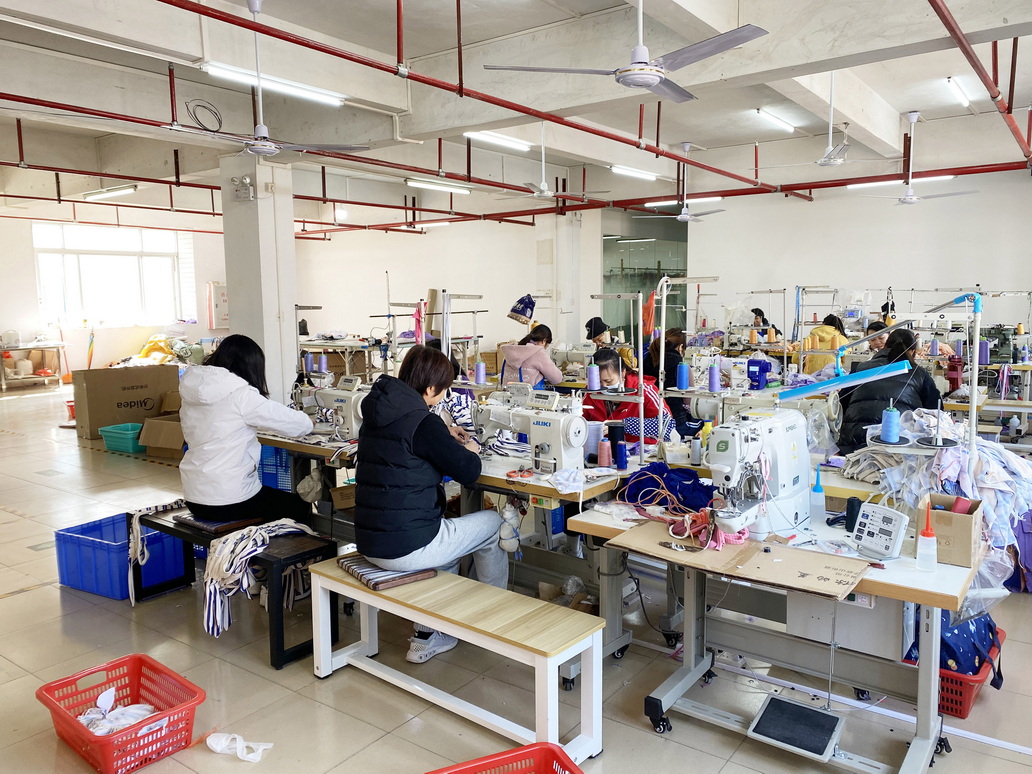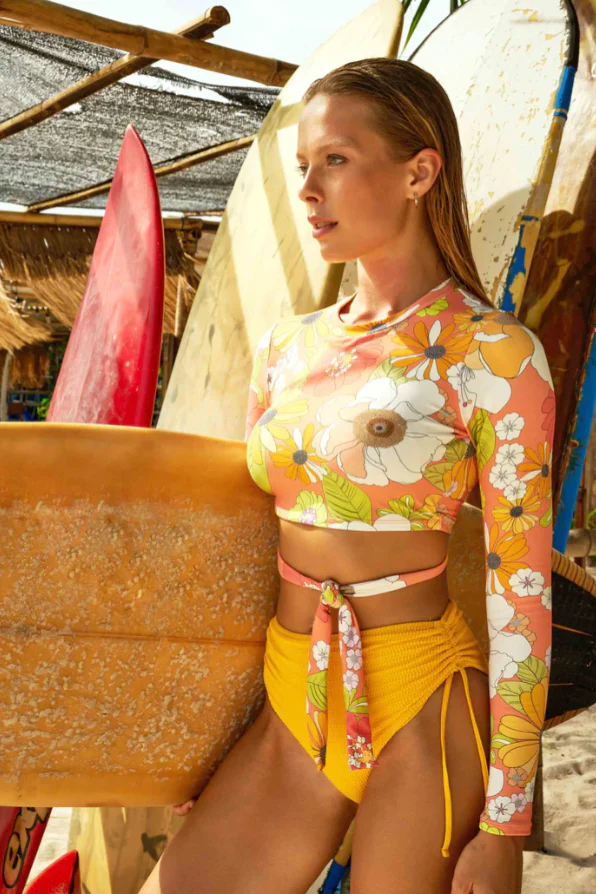Content Menu
● Introduction to Swimwear Manufacturing
>> What is Swimwear Manufacturing?
>> Why Start a Swimwear Business?
● How to Find a Swimwear Manufacturer
>> Understanding the Swimwear Manufacturing Landscape
>> Defining Your Brand's Needs
>> Researching Potential Manufacturers
>> Evaluating Potential Manufacturers
>> Contacting and Vetting Manufacturers
>> Understanding the Production Process
>> Building a Strong Relationship with Your Manufacturer
>> Navigating Challenges in Swimwear Manufacturing
>> Staying Informed and Adapting
● Top Swimwear Production Tips
>> Designing Your Swimwear
>> Working with Manufacturers
● Finding the Best Swimwear Factories
>> Global vs. Local Factories
>> Factory Visits and Inspections
● Conclusion
● Frequently Asked Questions (FAQs)
>> How much does it cost to start a swimwear line?
>> What are the best materials for swimwear?
Discover the insider secrets to finding the perfect swimwear manufacturer for your brand and make a splash in the industry!
The swimwear industry is a dynamic and ever-evolving sector of the fashion world, with new trends and styles emerging each season. For entrepreneurs and designers looking to make a splash in this competitive market, finding the right swimwear manufacturer is a crucial step towards success. This comprehensive guide will walk you through the process of identifying, evaluating, and partnering with the perfect swimwear manufacturer for your brand.
Introduction to Swimwear Manufacturing
Swimwear manufacturing is a special kind of making clothes that focuses on swimsuits and beachwear. It means creating swimwear that people can wear when they swim, sunbathe, or play at the beach. This is different from making regular clothes because swimwear must be made from materials that can handle water and sunlight. It also needs to fit well so that people can move comfortably while enjoying their time in the water.
What is Swimwear Manufacturing?
To manufacture swimwear means to design and produce swimsuits, bikinis, and other water-friendly outfits. This process includes choosing the right fabrics, cutting the material, sewing it together, and making sure everything is perfect for swimming. Unlike regular clothes, swimwear has specific needs. For example, it must dry quickly and stay in shape when wet. Swimwear manufacturers pay attention to these details to create the best products for their customers.
Why Start a Swimwear Business?
Many people might want to start a swimwear business because it can be really fun! Designing swimwear allows someone to express their creativity and style. You can create colorful patterns, cool designs, and unique shapes that people will love to wear at the pool or beach. Plus, the swimwear market is always popular, especially in summer, making it a great business idea. With the right swimwear business tips, anyone can turn their ideas into a successful line of swimwear that brings joy to many.
How to Find a Swimwear Manufacturer
Understanding the Swimwear Manufacturing Landscape
Before diving into the search for a manufacturer, it's essential to understand the current landscape of swimwear production. The industry is diverse, with manufacturers ranging from small, specialized workshops to large-scale factories. Some focus on high-end, luxury swimwear, while others specialize in mass-market production. Understanding this variety will help you narrow down your search to manufacturers that align with your brand's vision and target market.
Defining Your Brand's Needs
The first step in finding the right swimwear manufacturer is to clearly define your brand's needs and expectations. Consider the following factors:
1. Production Volume: Are you looking for small-batch production or large-scale manufacturing?
2. Quality Standards: What level of quality do you expect for your swimwear products?
3. Design Complexity: Will your designs require specialized techniques or simple construction?
4. Materials: Do you have specific fabric requirements or eco-friendly material preferences?
5. Price Point: What is your target retail price, and how does this affect your production budget?
6. Turnaround Time: What are your production timeline expectations?
7. Customization: Do you need a manufacturer capable of producing fully custom designs?
By clearly outlining these aspects, you'll be better equipped to communicate your needs to potential manufacturers and evaluate their suitability for your brand.
Researching Potential Manufacturers
With a clear understanding of your needs, it's time to start researching potential manufacturers. Here are several methods to find swimwear manufacturers:
1. Online Directories: Utilize online platforms and directories specifically designed for connecting brands with manufacturers. These often include detailed profiles, reviews, and contact information.
2. Trade Shows: Attend industry trade shows and events focused on swimwear and textile manufacturing. These provide excellent opportunities to meet manufacturers face-to-face and see their work firsthand.
3. Industry Networks: Leverage your professional network within the fashion industry. Colleagues, mentors, or even competitors might be willing to share recommendations or insights.
4. Social Media: Use platforms like LinkedIn or Instagram to connect with industry professionals and discover manufacturers showcasing their work.
5. Fashion Incubators: Many cities have fashion incubators or accelerators that can provide resources and connections to local manufacturers.
6. Sourcing Agents: Consider working with a sourcing agent who specializes in swimwear manufacturing. They can leverage their existing relationships to find suitable manufacturers for your brand.

Evaluating Potential Manufacturers
Once you've compiled a list of potential manufacturers, it's time to evaluate them based on several key criteria:
1. Experience and Expertise: Look for manufacturers with a proven track record in swimwear production. Experience in your specific niche (e.g., performance swimwear, luxury bikinis) is particularly valuable.
2. Production Capabilities: Ensure the manufacturer can handle your desired production volume and has the necessary equipment and skills to produce your designs.
3. Quality Control: Inquire about their quality control processes. A rigorous quality assurance system is crucial for maintaining consistent product standards.
4. Communication: Assess their responsiveness and clarity in communication. Good communication is vital for a smooth working relationship, especially if you're working with an overseas manufacturer.
5. Minimum Order Quantities (MOQ): Check if their MOQ aligns with your production needs and budget.
6. Pricing and Payment Terms: Compare pricing structures and payment terms among different manufacturers. Be wary of prices that seem too good to be true, as they may indicate compromises in quality or ethical standards.
7. Samples and Prototyping: Evaluate their ability to produce high-quality samples and prototypes. This process is crucial for refining your designs before full production.
8. Turnaround Time: Consider their production lead times and ability to meet your deadlines.
9. Certifications and Compliance: Verify any relevant certifications, especially if you're focused on sustainable or ethical production.
10. References: Request and check references from other brands they've worked with to gain insights into their reliability and quality of work.

Contacting and Vetting Manufacturers
After narrowing down your list, it's time to reach out to potential manufacturers. Here's how to approach this phase:
1. Initial Contact: Send a professional inquiry outlining your project, including details about your brand, design concepts, and production requirements.
2. Request for Information (RFI): Prepare a detailed RFI asking about their services, capabilities, pricing structure, and any other relevant information.
3. Sample Requests: If initial discussions are promising, request samples of their work. This could include both standard samples and custom samples based on your designs.
4. Factory Visits: If possible, arrange visits to the manufacturing facilities. This allows you to assess their operations firsthand and build a personal relationship with the team.
5. Negotiation: Discuss pricing, MOQs, payment terms, and production timelines. Be prepared to negotiate, but also be clear about your non-negotiable requirements.
6. Trial Order: Before committing to a large order, consider starting with a small trial run to assess the manufacturer's performance and the quality of the final product.
Understanding the Production Process
To effectively work with a swimwear manufacturer, it's crucial to understand the basic production process. This knowledge will help you communicate your needs more clearly and set realistic expectations. The typical swimwear production process includes:
1. Design and Pattern Making: Your designs are translated into technical patterns.
2. Material Selection: Fabrics and trims are chosen based on your specifications.
3. Cutting: Fabric is cut according to the patterns.
4. Sewing and Construction: The pieces are sewn together to form the swimwear item.
5. Embellishment: Any additional decorations or embellishments are added.
6. Quality Control: Each piece is inspected for defects and adherence to specifications.
7. Finishing: Final touches like attaching labels and packaging are completed.
8. Shipping: The finished products are prepared for shipment to your specified location.

Building a Strong Relationship with Your Manufacturer
Once you've selected a manufacturer, focus on building a strong, long-term relationship. This involves:
1. Clear Communication: Maintain open and regular communication. Be clear about your expectations and listen to their feedback and suggestions.
2. Respect for Expertise: While you know your brand best, respect the manufacturer's expertise in production processes and materials.
3. Timely Payments: Adhere to the agreed payment terms to build trust and ensure smooth operations.
4. Feedback Loop: Establish a system for providing and receiving feedback on each production run to continuously improve the product and process.
5. Long-term Planning: Share your growth plans with the manufacturer. This can help them plan for increased capacity and potentially offer better terms as your orders grow.
6. Cultural Understanding: If working with an overseas manufacturer, take time to understand and respect cultural differences in business practices.
Navigating Challenges in Swimwear Manufacturing
As with any manufacturing process, swimwear production can come with its own set of challenges. Being prepared for these can help you navigate them more effectively:
1. Quality Consistency: Maintaining consistent quality across different production runs can be challenging. Regular quality checks and clear communication of standards are essential.
2. Material Sourcing: Swimwear often requires specialized fabrics. Work closely with your manufacturer to source high-quality, durable materials that meet your specifications.
3. Fit and Sizing: Achieving the perfect fit for swimwear is crucial. Be prepared for multiple rounds of sampling and fitting to get it right.
4. Seasonal Demands: The swimwear industry is highly seasonal. Plan your production schedule well in advance to meet peak season demands.
5. Minimum Order Quantities: Balancing MOQs with your inventory needs and budget can be tricky, especially for new brands. Consider negotiating flexible terms or exploring options for shared production runs.
6. Intellectual Property Protection: Ensure you have clear agreements in place to protect your designs and intellectual property.
7. Sustainability Concerns: If sustainability is a focus for your brand, finding manufacturers who can meet both your ethical and quality standards may require extra effort and potentially higher costs.

Staying Informed and Adapting
The swimwear industry, like all fashion sectors, is constantly evolving. Stay informed about industry trends, technological advancements, and changes in consumer preferences. This knowledge will help you work more effectively with your manufacturer and potentially identify new opportunities for innovation in your product line.
1. Attend Industry Events: Regularly participate in swimwear and fashion trade shows to stay updated on the latest trends and manufacturing technologies.
2. Subscribe to Industry Publications: Keep abreast of industry news through relevant publications and online resources.
3. Engage with Your Customer Base: Regularly seek feedback from your customers to understand changing preferences and needs.
4. Monitor Technological Advancements: Stay informed about new materials, production techniques, and sustainable practices that could benefit your brand.
5. Analyze Competitor Strategies: Keep an eye on what successful competitors are doing in terms of design, manufacturing, and marketing.
Top Swimwear Production Tips
When you start making swimwear, there are some important things to keep in mind. These tips will help you create great swimwear that people love to wear. Let's explore some swimwear business tips that can guide you through the swimwear production process.
Designing Your Swimwear
The first step in swimwear production is designing your swimwear. Think about what kind of styles you want to create. Do you want bright colors or fun patterns? Make sure your designs are not only nice to look at but also comfortable to wear. It's good to sketch your ideas before making them into real swimwear. Try to imagine how your designs will look on people in the water. This will help you create appealing and functional swimwear designs that customers will love.
Working with Manufacturers
Once you have your designs ready, it's time to work with manufacturers. Maintaining a good working relationship with your chosen manufacturer is very important. Always communicate clearly about what you want. If you have questions or changes, let them know right away. It's also useful to ask for updates on how your swimwear is being made. This way, you can ensure that everything is going according to your plans. Good teamwork can make the swimwear production process smoother and more enjoyable!
Finding the Best Swimwear Factories
When you're ready to make your own swimwear, finding the best swimwear factories is super important! A good factory can help turn your creative ideas into real swimsuits. There are many things to think about when looking for the right factory to work with.
Global vs. Local Factories
First, you need to decide whether you want to work with global or local factories. Global factories are located in different countries around the world. They might offer a wide variety of fabrics and lower prices. However, shipping can take a long time and costs might add up.
On the other hand, local factories are closer to you. This means you can visit them easily and see how things are made. Working with local factories can be great for quick communication and faster shipping. But sometimes, they might not have as many options or might be a bit more expensive.
So, think about what is more important for your swimwear business. Do you want more choices and lower prices? Or do you prefer to work closely and quickly with a factory nearby?
Factory Visits and Inspections
Once you've found some factories you'd like to work with, it's a good idea to visit them. A factory visit helps you see how they work. You can look at their machines and how they make swimwear. This is important because it gives you a chance to check the quality of their work.
During your visit, pay attention to the cleanliness of the factory and how the workers do their jobs. You can also ask to see some of the swimwear they've made. This will help you understand if they can make the kind of swimwear you want.
Remember to ask questions! Find out about their experience, their production times, and their ability to handle your specific designs. This way, you can choose a factory that meets your needs and helps your swimwear business succeed.
Conclusion
Finding the right swimwear manufacturer is a crucial step in bringing your vision to life and building a successful swimwear brand. It requires thorough research, careful evaluation, and ongoing relationship building. By understanding your brand's needs, thoroughly vetting potential manufacturers, and maintaining clear communication throughout the process, you can establish a productive partnership that will help your swimwear line thrive.
Remember that the perfect manufacturer for your brand is one that not only meets your production needs but also aligns with your brand values and long-term vision. Whether you're creating high-performance athletic swimwear, luxury resort wear, or sustainable eco-friendly swimsuits, the right manufacturing partner can make all the difference in turning your designs into reality and your brand into a success.
As you embark on this journey, stay patient, be thorough in your research, and don't be afraid to ask questions. The time and effort invested in finding the right swimwear manufacturer will pay dividends in the quality of your products, the efficiency of your production process, and ultimately, the success of your brand in the competitive swimwear market.
Frequently Asked Questions (FAQs)
How much does it cost to start a swimwear line?
Starting a swimwear line can vary in cost. It depends on things like designs, materials, and how many swimsuits you want to make. If you're just starting, you might spend a few hundred to a few thousand dollars. It's important to create a budget and plan for costs like materials, manufacturing, and marketing. Remember, using good swimwear production techniques can help you save money in the long run!
What are the best materials for swimwear?
The best materials for swimwear are usually stretchy and durable. Common choices include nylon and polyester because they dry quickly and feel comfortable. Spandex is also popular because it helps swimsuits fit snugly. When looking for quality swimwear suppliers, always check that they use high-quality fabrics for the best results. Soft and stretchy materials will make your swimsuits more enjoyable to wear!



































































